Original author: Sleepy.txt
Original Editor: Lin Wanwan
Jia Yueting has figured out the cryptocurrency world.
On October 8th, he posted a picture of a car with "BNB" printed on it on X, with the caption "Drive a Binance Car, Enjoy a Binance Life." The market capitalization of the meme coin of the same name, "Binance Car," skyrocketed, reaching $30 million in just a few hours.
After the popularity reached its peak, Jia Yueting personally came out to refute the rumors: he has never issued any coins.
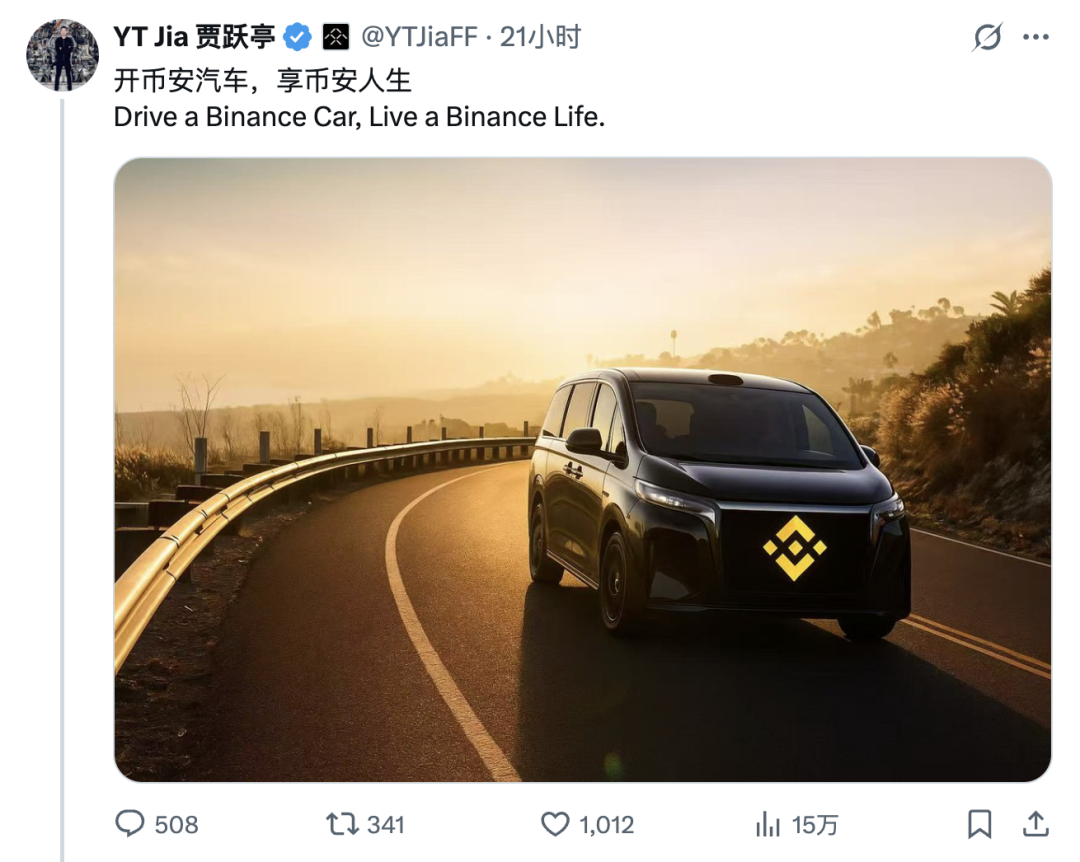
Image source: X
Jia's car project remains elusive, but he clearly knows how to make waves in the crypto world. However, his involvement in the Binance meme this time was no accident.
Just a few weeks ago, in September 2025, C10 Treasury, the crypto asset fund managed by Jia Yueting, announced its latest earnings, showing a floating profit of approximately 7%. A few days later, he made another even bigger move, spending $41 million to acquire Nasdaq-listed QLGN.
If approved by the shareholders' meeting, QLGN will be renamed CXC 10 and shift its focus to cryptocurrency and Web 3. According to the plan, the C 10 Treasury will also subsequently initiate the allocation of the top ten crypto assets.
From content, cars to finance, Jia Yueting has always been looking for a stage to continue his narrative. And this time, he has tied himself to the world of encryption.
More than a decade ago, the lights in Beijing's LeEco Tower often burned brightly late into the night. It was an era of ambition. Jia Yueting stood on stage, proclaiming "ecological counterattack," aiming to forge a vast future using hardware, content, and finance.
He was like a dream maker, building the future with concepts and visions. The investors and media in the audience were ignited by slogans like "disrupting television," "redefining the mobile phone," and "building China's Tesla."
Now in Los Angeles, he's using C10 Treasury's earnings and QLGN's acquisition plans as new narrative fodder. He's using data, compliance, and capital to build a larger narrative framework.
Whether Jia Yueting's transformation is a true metamorphosis or just old wine in a new bottle, the story begins with the fourteen years when he was intertwined with the crypto world.
The Storm
In 2011, Jia Yueting was on the upward path of his life.
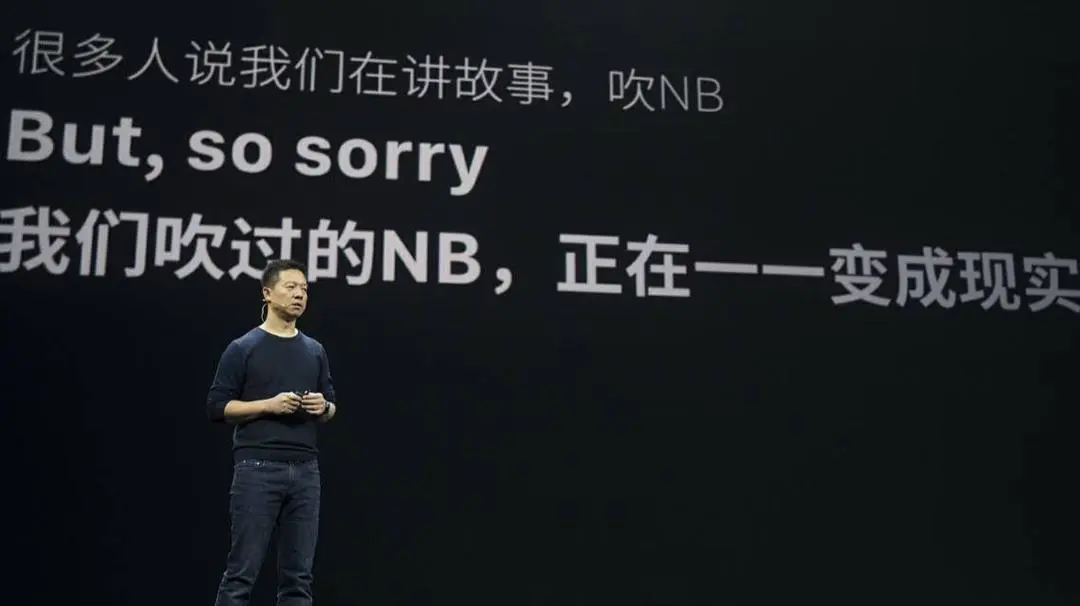
Jia Yueting speaking at the press conference; Image source: Huxiu
LeTV had just listed on the ChiNext board, becoming "China's first video stock." That year, the company's revenue reached 598 million yuan, a 151% year-on-year increase, and its net profit reached 131 million yuan, an 87% year-on-year increase. But his ambitions went far beyond just a video website; he wanted to build an ecosystem spanning content, devices, platforms, and applications.
That same year, Li Ming came into his sight. Li Ming, the technical lead at LeEco Cloud, enjoyed immersing himself in Bitcoin in his spare time, running a node on his home computer. At the time, WeChat had just launched, Alibaba was preparing for its IPO, and Baidu was still at the center of the data traffic empire. Few people paid attention to this digital currency experiment.
Jia Yueting, however, took notice. He was always keen on new technologies, able to detect new directions amidst the clamor. This intuition allowed him to recognize the potential of blockchain before his peers. He began to communicate with Li Ming, asking about the underlying logic of Bitcoin and exploring whether this relatively unknown technology could become part of the LeEco ecosystem.
From 2012 to 2013, Jia Yueting's "ecological backlash" reached its climax.
He first launched the first generation of Super TV, followed by the LeTV Box the following year. The logic was simple: hardware subsidies to attract users, content fees to recoup losses, and the platform effect to amplify profits. This strategy was unique at the time. While others were still struggling with copyright fees, he had already figured out how to use hardware sales to amortize costs.
At that time, the price of Bitcoin hit $1,000 for the first time. Li Ming sent an email to Jia Yueting, proposing to add a mining function to LeTV boxes and LeTV TVs. The coins mined by users could be used to offset the annual membership fee of 499 yuan.
This solution involved hardware, software, networking, and finance, making it far more complex than conventional products. However, its integration of hardware, content, digital currency, and user incentives into a single system was exactly what Jia Yueting wanted. Later, at a strategic meeting, he directly named Li Ming as the project leader, disrupting the company's normal reporting structure. "Normally, the big boss wouldn't personally decide who would be in charge of a project," Li Ming later recalled.
In 2015, LeEco experienced its peak year. Its annual revenue reached 13.017 billion yuan, a year-on-year increase of nearly 90%. Its market capitalization briefly surpassed 150 billion yuan, making it a star company on the ChiNext board. Super TV sales exceeded 3 million units, and LeEco's mobile phone was an immediate hit. Sports copyright and car manufacturing projects were also being rolled out simultaneously. For the first time, Jia Yueting's "ecological counterattack" showed its true power.
That same year, he turned his attention to finance. Hardware and content provided the surface of the story, but to keep the entire system functioning, a new fulcrum was necessary. He saw finance as the lever that could truly enable the ecosystem to regenerate itself.
In August 2015, Wang Yongli, former Vice President of the Bank of China, officially joined LeEco as CEO of LeEco Finance. Jia Yueting had put considerable effort into recruiting Wang Yongli. He outlined a grand vision for Wang Yongli: to make financial innovation the pillar of the LeEco ecosystem.
After Wang Yongli arrived, LeEco's financial sector expanded rapidly, with payments, wealth management, insurance, credit reporting, and even blockchain all included in its exploration list. Jia Yueting's mission was clear: to achieve "ecological transformation" in the financial sector.
In March 2016, under the impetus of Jia Yueting, LeEco Finance announced the establishment of a blockchain laboratory. At the time, most domestic internet companies were still in a wait-and-see phase, with few dedicated labs. Jia Yueting instructed the lab not to focus solely on mining or token issuance, but rather to identify application scenarios related to LeEco's existing businesses.
Therefore, the laboratory began to experiment in several directions, such as embedding blockchain functions in LeTV boxes and TVs to make user devices into nodes; using blockchain to protect copyright and using tokens to incentivize content creators; and exploring chain-based payment, financial management and insurance services.
In the same year, Jia Yueting began to expand overseas in a big way.
He established a branch in the United States, negotiated the acquisition of Vizio's TV business, and invested some of the funds in Faraday Future. Cross-border capital flows have become an unavoidable challenge for companies expanding overseas. Traditional payment channels are costly, slow, and subject to numerous regulatory oversights. Blockchain offers another possibility, using a decentralized network to achieve faster and lower-cost settlements.
In December of that year, LeEco Finance and Stellar announced a strategic partnership. At the time, Stellar was one of the few public blockchains focused on payments, offering fast transaction confirmations and low energy consumption, making it more suitable for commercial use.
LeEco presented its blockchain ecosystem strategy in detail to the Stellar team, explaining the crucial role of blockchain technology within this strategy. This vision impressed the Stellar team, and the two sides quickly reached a partnership agreement. This partnership brought LeEco's blockchain exploration to the international stage for the first time.
This plan gradually expanded into a complete blueprint. Hardware was embedded in blockchain, content was settled using tokens, the financial side explored payment and wealth management, and the application side extended to identity authentication and supply chain. The vision was vast and the pace was aggressive, but it also relied heavily on funding and internal coordination.
In 2016, it was too early.
In the second half of the year, LeTV's capital chain began to tighten, its mobile phone business was losing money, its car manufacturing business continued to burn money, and its overseas expansion was still draining money.
In November of that year, Jia Yueting admitted internally that the company needed to "put on the brakes." As cash flow tightened, the blockchain laboratory's plans were forced to pause.
Twilight of Empire
2016 to 2017 was a watershed in Jia Yueting's life.
This year, the LeEco empire he built with his own hands began to fall apart, and the former entrepreneurial idol quickly fell into the target of public opinion.
On November 6, 2016, he released the famous internal letter "LeTV's Sea and Fire: Be Swallowed by the Waves or Boil the Ocean". 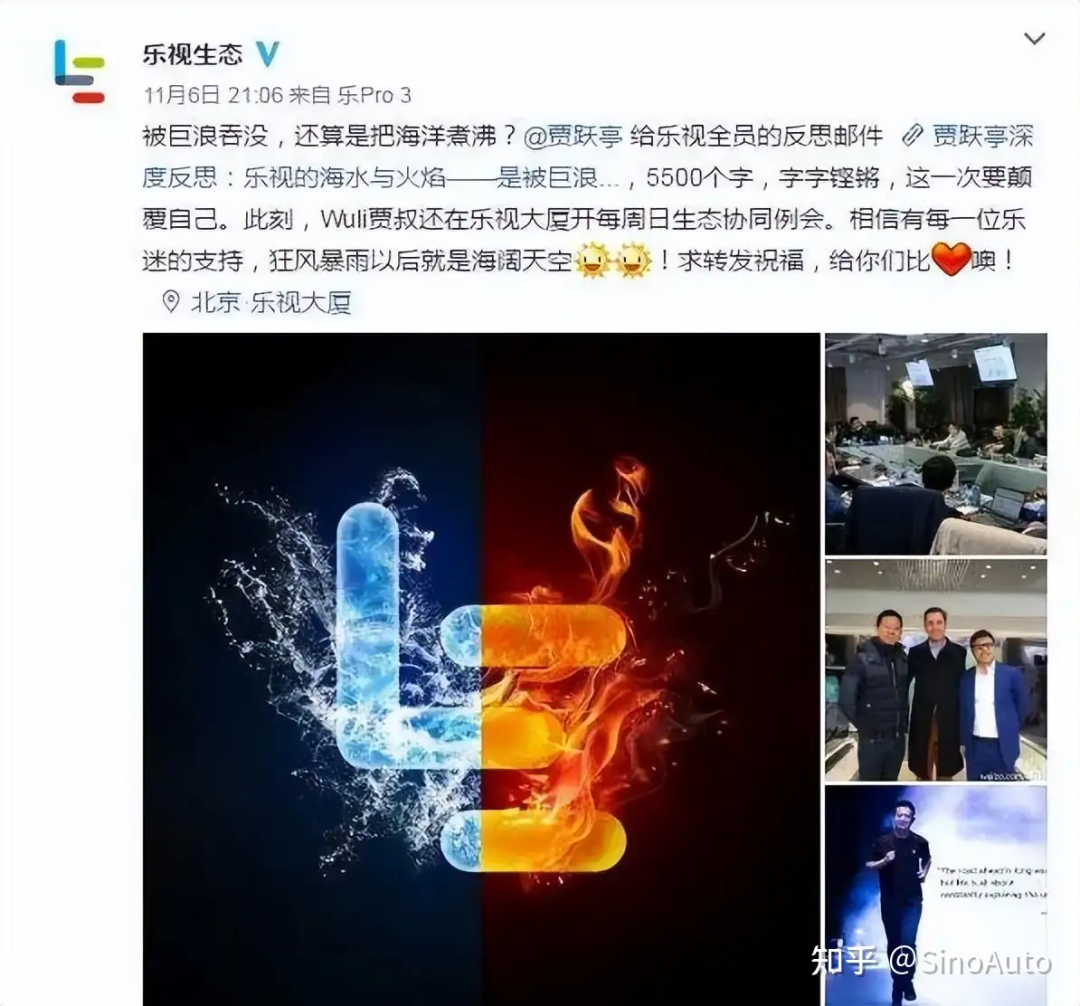
Image source: Weibo
In the letter, he admitted: "The LeEco ecosystem is facing major challenges. Our development model of blindly rushing forward and burning money in pursuit of scale expansion has reached its end."
The release of this letter felt like a belated awakening. Jia Yueting began to reckon with his decisions of the past few years: excessive expansion, blind expansion, and a disregard for cash flow. During that period of near-out-of-control growth, he had once believed that as long as the ecosystem was large enough, growth would mask the problems.
But reality soon proved that every one of LeEco's businesses was draining the same lifeblood. When too many projects simultaneously drained its resources, the massive system became an unsustainable cycle.
On July 4, 2017, more than six months after the internal letter, Jia Yueting boarded a flight to the United States. He told others it was a short business trip. He never returned.
To the outside world, it was a hasty escape. LeEco was saddled with debt, suppliers were blocking the building entrance, and pressure from investors and regulators was mounting. But from his perspective, it was a strategic shift. Faraday Future's headquarters was in Los Angeles, and he needed to be there. The US capital market was more open, the regulatory framework more clear, and he believed the opportunity for a restart might lie there.
Back then, the United States was in the midst of a blockchain and cryptocurrency frenzy. Bitcoin prices were hitting record highs, the ICO market was rapidly expanding, new projects were popping up daily, and funding and concepts were chasing each other. It was a stage fueled by desire.
A year later, the wave reached China.
China's blockchain industry also experienced a brief period of excitement. Initial coin offerings (ICOs) became the hottest financing method, and nearly every industry attempted to incorporate the "blockchain+" label. Against this backdrop, LeEco's subsidiary, LeEco, and YiChain Technology launched the "YiChain Box" on July 11th. 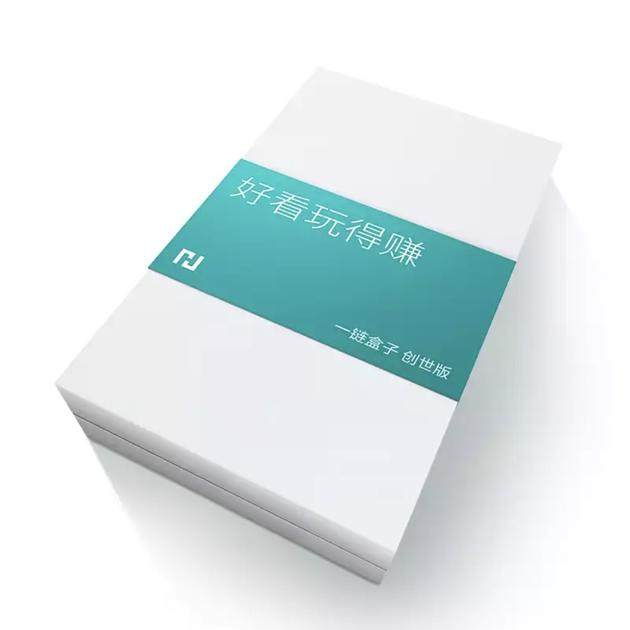
Yilian Box; Image source: Smart TV Network
This was a 599 yuan TV box with built-in blockchain functionality. Users could earn OC (OneChain Token) by sharing their idle bandwidth, which could then be redeemed for merchandise on the LeEco Mall. For LeEco, which was already struggling, this felt more like a hasty self-rescue than a well-thought-out strategy.
Shortly after the product launched, the Shenzhen Stock Exchange issued an inquiry letter questioning whether LeEco was leveraging blockchain technology to inflate its stock price. This regulatory intervention cast a shadow over the project overnight.
Jia Yueting originally intended to demonstrate the commercial value of blockchain through the "OneChain Box," but has now been accused of "conceptual hype." LeEco quickly clarified that it was not involved in token issuance and trading. However, this explanation did not change public opinion. The "OneChain Box" project was ultimately discontinued, marking LeEco's final foray into the blockchain space.
The failure of this project actually reflected the limitations of the entire blockchain industry at that time.
In 2018, the technology was still in its early stages, with few practical applications and users still skeptical of digital currencies. Regulatory policies fluctuated across countries, and projects were inherently risky. It was an era brimming with concepts, but even the slightest lag in execution could quickly dissipate the hype.
This episode also gave Jia Yueting a more realistic understanding of blockchain. He realized that the technology was still far from being fully implemented, requiring both a compliant environment and a more mature market mechanism. LeEco's attempt might have been premature and too fast, but it made him see clearly the true gap between business and technology. This understanding became a reference for his subsequent re-entry.
LeEco's crisis wiped out both capital and talent. Interestingly, many of those who left later entered the blockchain industry. Public data indicates that at least 17 former LeEco employees plunged into the crypto world during those years, continuing to pursue their unfinished dreams.
The second half of the gamble
In Faraday Future's factory, Jia Yueting spent the most low-key years of his life. 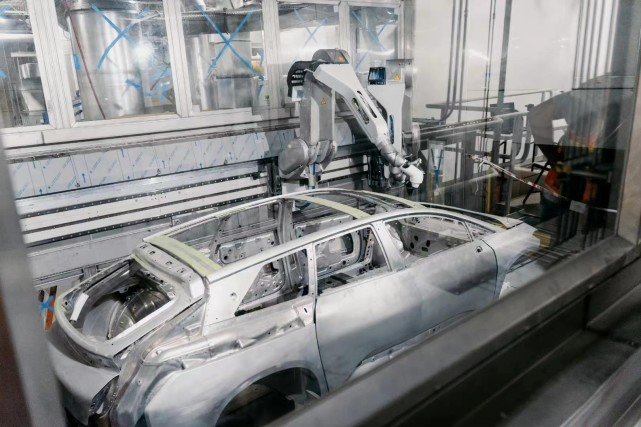
Faraday Future Factory; Image source: Tencent News
From 2019 to 2024, he virtually disappeared from public view, mired in the mundane details of car manufacturing. He faced a relentless stream of challenges, including technical bottlenecks, funding constraints, market competition, and regulatory constraints. Faraday Future's repeated fundraising struggles in the United States, coupled with repeated delays in its mass production plans, made him truly appreciate the complexity and slow pace of manufacturing.
The logic of the internet is speed, while the logic of car manufacturing is patience. This experience opened him up to a different pace: trial and error, review, and revision. Between speed and risk, slow down.
Meanwhile, the crypto world entered a new cycle. Tesla announced its purchase of $1.5 billion worth of Bitcoin, sending shockwaves through global markets. Subsequently, companies like MicroStrategy, Square, and PayPal entered the market. The massive influx of institutional funds transformed this market, once a speculative market, into a regulated asset class.
Between 2019 and 2024, the blockchain industry itself underwent an unprecedented round of iterations.
Ethereum's smart contracts have gradually matured, and the funding scale of DeFi protocols has jumped from hundreds of millions of dollars to hundreds of billions of dollars; NFT has brought digital art and virtual assets into the mainstream vision; DAO has made community governance a new way of organizing.
Looking back at Jia Yueting’s “ecological counter-attack” idea during his LeEco period, these new technological paths are somewhat familiar, but the context and tools are completely different.
By 2024, the entire industry's infrastructure will be vastly different from what it was six years ago. The influx of institutional capital, the maturity of stablecoins and DeFi, and their integration with AI will make the market more robust and operational.
Compared with the "One Chain Box" of that year, the current trial methods and environment are completely different. To return to this track, we must be based on clearer market logic and a more restrained execution path.
On August 17, 2025, in Pebble Beach, California, Jia Yueting took the stage again and announced the launch of the "EAI + Crypto dual flywheel" strategy.
Unlike previous press conferences, what was unveiled was not a new car, but a brand-new business framework that binds EAI (Electric AI) and Crypto to form a two-way circulation growth system.
The logic behind this strategy is straightforward. EAI represents Faraday Future's electric vehicles and artificial intelligence businesses, providing a source of cash flow for the real economy; crypto represents the other, opening the door to the broader realm of crypto asset management and the digital economy. The two feed off each other: EAI provides cash flow, while crypto revenue flows back into manufacturing and R&D.
C10 Treasury is the starting point of this "dual flywheel" strategy. It's a crypto asset management platform that employs an 80% passive + 20% active strategy. The majority of funds are allocated strictly to the top ten cryptocurrencies (excluding stablecoins) according to the C10 Index, with the remaining portion being managed flexibly by the team.
Passive investments act like a foundation, maintaining structural stability; active investments preserve the space for offensive activity. As of September 18, 2025, C10 Treasury managed approximately $10 million in assets and achieved a 7% paper profit.
On September 20th, Jia Yueting struck again. Faraday Future acquired Nasdaq-listed QLGN for $41 million, with plans to rename it CXC10. QLGN (Qualigen Therapeutics) was originally a small biotech company, and Jia Yueting was attracted not by its core business but by its public company status and access to financing.
That means a ready-made capital shell. 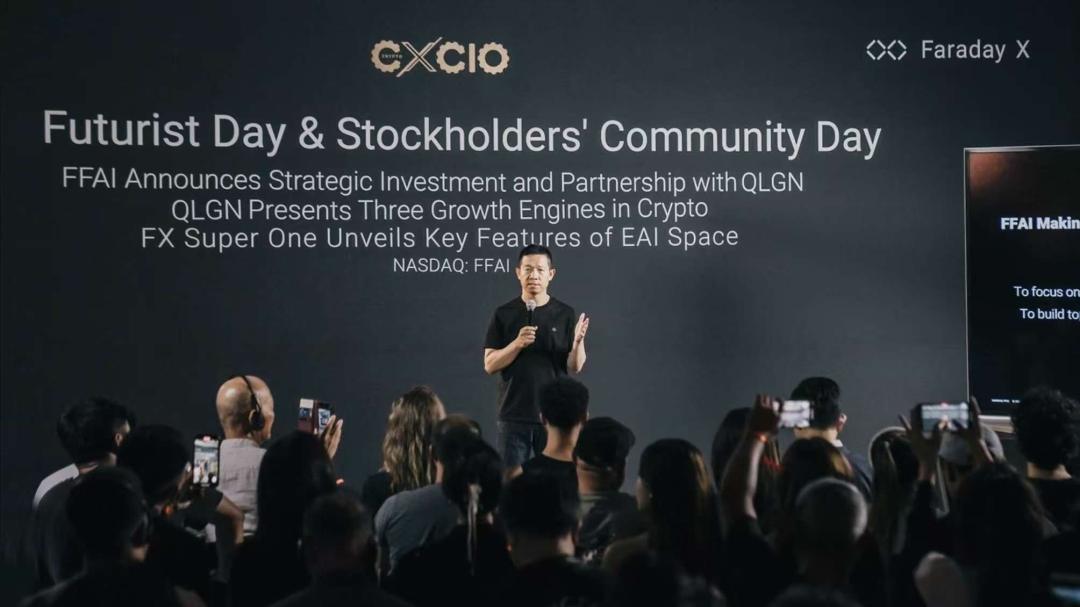
Jia Yueting at the CXC 10 launch conference; Source: Faraday Future official X
He personally invested $4 million in the acquisition, acquiring approximately a 7% stake, which he locked up for two years. On the day the news was announced, QLGN's stock price skyrocketed 255%, with its pre-market price rising from $2.80 to over $10.
More importantly, a new name emerged from this acquisition: the SIGN Foundation. SIGN is a blockchain technology company backed by top institutions like Binance Labs and Sequoia Capital. Its participation not only brings funding but also technical and resource support. For Jia Yueting, this represents a return to the core of the industry.
Compared to his LeEco days, Jia Yueting's approach is markedly different. This time, he's using capital structure, compliance procedures, and institutional alliances to construct a new narrative. However, whether this shift represents a true transformation or a more refined cycle, only time will tell.
Unfinished Road
Looking back from the present, Jia Yueting's business trajectory is like a circle.
During the LeEco era, he told the story of "ecological counter-attack"; at Faraday Future, he portrayed the future of travel with electric vehicles; and in 2025, he brought the "EAI + Crypto dual flywheels" to the forefront.
Every shift comes at a critical juncture of the times and is accompanied by controversy.
The real test lies ahead. C10 Treasury's unrealized profits are primarily due to market fluctuations, and whether it can weather these fluctuations remains uncertain. The "dual flywheel" strategy sounds logical, but it has yet to be tested over time. More crucially, has he truly learned restraint from past failures, or is it simply a different narrative? No one can answer that.
From the LeEco Building in Chaoyang, Beijing, to the factory workshop in California, USA, and then to the capital stage of Nasdaq, this story spans regions and industries.
In the cryptocurrency world, there is never a final ending to a story, only the next chapter that is constantly being written.
Jia Yueting's story continues.
- 核心观点:贾跃亭转向加密领域构建新叙事。
- 关键要素:
- 发布BNB汽车图引爆同名Meme币。
- 加密基金C10 Treasury浮盈7%。
- 收购纳斯达克公司QLGN布局合规。
- 市场影响:引发加密概念股与Meme币波动。
- 时效性标注:短期影响



